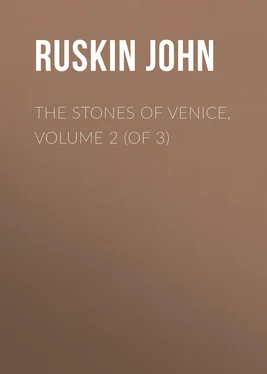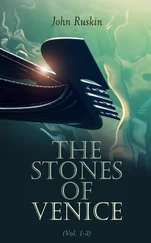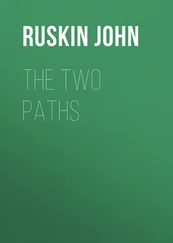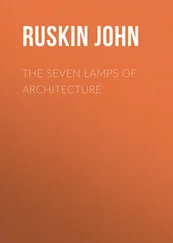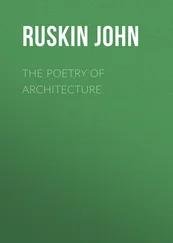John Ruskin - The Stones of Venice, Volume 2 (of 3)
Здесь есть возможность читать онлайн «John Ruskin - The Stones of Venice, Volume 2 (of 3)» — ознакомительный отрывок электронной книги совершенно бесплатно, а после прочтения отрывка купить полную версию. В некоторых случаях можно слушать аудио, скачать через торрент в формате fb2 и присутствует краткое содержание. Жанр: foreign_antique, foreign_home, architecture_book, literature_19, visual_arts, на английском языке. Описание произведения, (предисловие) а так же отзывы посетителей доступны на портале библиотеки ЛибКат.
- Название:The Stones of Venice, Volume 2 (of 3)
- Автор:
- Жанр:
- Год:неизвестен
- ISBN:нет данных
- Рейтинг книги:5 / 5. Голосов: 1
-
Избранное:Добавить в избранное
- Отзывы:
-
Ваша оценка:
- 100
- 1
- 2
- 3
- 4
- 5
The Stones of Venice, Volume 2 (of 3): краткое содержание, описание и аннотация
Предлагаем к чтению аннотацию, описание, краткое содержание или предисловие (зависит от того, что написал сам автор книги «The Stones of Venice, Volume 2 (of 3)»). Если вы не нашли необходимую информацию о книге — напишите в комментариях, мы постараемся отыскать её.
The Stones of Venice, Volume 2 (of 3) — читать онлайн ознакомительный отрывок
Ниже представлен текст книги, разбитый по страницам. Система сохранения места последней прочитанной страницы, позволяет с удобством читать онлайн бесплатно книгу «The Stones of Venice, Volume 2 (of 3)», без необходимости каждый раз заново искать на чём Вы остановились. Поставьте закладку, и сможете в любой момент перейти на страницу, на которой закончили чтение.
Интервал:
Закладка:
§ XLIII. I believe that from the beginning of the world there has never been a true or fine school of art in which color was despised. It has often been imperfectly attained and injudiciously applied, but I believe it to be one of the essential signs of life in a school of art, that it loves color; and I know it to be one of the first signs of death in the Renaissance schools, that they despised color.
Observe, it is not now the question whether our Northern cathedrals are better with color or without. Perhaps the great monotone grey of Nature and of Time is a better color than any that the human hand can give; but that is nothing to our present business. The simple fact is, that the builders of those cathedrals laid upon them the brightest colors they could obtain, and that there is not, as far as I am aware, in Europe, any monument of a truly noble school which has not been either painted all over, or vigorously touched with paint, mosaic, and gilding in its prominent parts. Thus far Egyptians, Greeks, Goths, Arabs, and mediæval Christians all agree: none of them, when in their right senses, ever think of doing without paint; and, therefore, when I said above that the Venetians were the only people who had thoroughly sympathized with the Arabs in this respect, I referred, first, to their intense love of color, which led them to lavish the most expensive decorations on ordinary dwelling-houses; and, secondly, to that perfection of the color-instinct in them, which enabled them to render whatever they did, in this kind, as just in principle as it was gorgeous in appliance. It is this principle of theirs, as distinguished from that of the Northern builders, which we have finally to examine.
§ XLIV. In the second chapter of the first volume, it was noticed that the architect of Bourges Cathedral liked hawthorn, and that the porch of his cathedral was therefore decorated with a rich wreath of it; but another of the predilections of that architect was there unnoticed, namely, that he did not at all like grey hawthorn, but preferred it green, and he painted it green accordingly, as bright as he could. The color is still left in every sheltered interstice of the foliage. He had, in fact, hardly the choice of any other color; he might have gilded the thorns, by way of allegorizing human life, but if they were to be painted at all, they could hardly be painted any tiling but green, and green all over. People would have been apt to object to any pursuit of abstract harmonies of color, which might have induced him to paint his hawthorn blue.
§ XLV. In the same way, whenever the subject of the sculpture was definite, its color was of necessity definite also; and, in the hands of the Northern builders, it often became, in consequence, rather the means of explaining and animating the stories of their stone-work, than a matter of abstract decorative science. Flowers were painted red, trees green, and faces flesh-color; the result of the whole being often far more entertaining than beautiful. And also, though in the lines of the mouldings and the decorations of shafts or vaults, a richer and more abstract method of coloring was adopted (aided by the rapid development of the best principles of color in early glass-painting), the vigorous depths of shadow in the Northern sculpture confused the architect’s eye, compelling him to use violent colors in the recesses, if these were to be seen as color at all, and thus injured his perception of more delicate color harmonies; so that in innumerable instances it becomes very disputable whether monuments even of the best times were improved by the color bestowed upon them, or the contrary. But, in the South, the flatness and comparatively vague forms of the sculpture, while they appeared to call for color in order to enhance their interest, presented exactly the conditions which would set it off to the greatest advantage; breadth of surface displaying even the most delicate tints in the lights, and faintness of shadow joining with the most delicate and pearly greys of color harmony; while the subject of the design being in nearly all cases reduced to mere intricacy of ornamental line, might be colored in any way the architect chose without any loss of rationality. Where oak-leaves and roses were carved into fresh relief and perfect bloom, it was necessary to paint the one green and the other red; but in portions of ornamentation where there was nothing which could be definitely construed into either an oak-leaf or a rose, but a mere labyrinth of beautiful lines, becoming here something like a leaf, and there something like a flower, the whole tracery of the sculpture might be left white, and grounded with gold or blue, or treated in any other manner best harmonizing with the colors around it. And as the necessarily feeble character of the sculpture called for and was ready to display the best arrangements of color, so the precious marbles in the architect’s hands give him at once the best examples and the best means of color. The best examples, for the tints of all natural stones are as exquisite in quality as endless in change; and the best means, for they are all permanent.
§ XLVI. Every motive thus concurred in urging him to the study of chromatic decoration, and every advantage was given him in the pursuit of it; and this at the very moment when, as presently to be noticed, the naïveté of barbaric Christianity could only be forcibly appealed to by the help of colored pictures: so that, both externally and internally, the architectural construction became partly merged in pictorial effect; and the whole edifice is to be regarded less as a temple wherein to pray, than as itself a Book of Common Prayer, a vast illuminated missal, bound with alabaster instead of parchment, studded with porphyry pillars instead of jewels, and written within and without in letters of enamel and gold.
§ XLVII. Law VII. That the impression of the architecture is not to be dependent on size. And now there is but one final consequence to be deduced. The reader understands, I trust, by this time, that the claims of these several parts of the building upon his attention will depend upon their delicacy of design, their perfection of color, their preciousness of material, and their legendary interest. All these qualities are independent of size, and partly even inconsistent with it. Neither delicacy of surface sculpture, nor subtle gradations of color, can be appreciated by the eye at a distance; and since we have seen that our sculpture is generally to be only an inch or two in depth, and that our coloring is in great part to be produced with the soft tints and veins of natural stones, it will follow necessarily that none of the parts of the building can be removed far from the eye, and therefore that the whole mass of it cannot be large. It is not even desirable that it should be so; for the temper in which the mind addresses itself to contemplate minute and beautiful details is altogether different from that in which it submits itself to vague impressions of space and size. And therefore we must not be disappointed, but grateful, when we find all the best work of the building concentrated within a space comparatively small; and that, for the great cliff-like buttresses and mighty piers of the North, shooting up into indiscernible height, we have here low walls spread before us like the pages of a book, and shafts whose capitals we may touch with our hand.
§ XLVIII. The due consideration of the principles above stated will enable the traveller to judge with more candor and justice of the architecture of St. Mark’s than usually it would have been possible for him to do while under the influence of the prejudices necessitated by familiarity with the very different schools of Northern art. I wish it were in my power to lay also before the general reader some exemplification of the manner in which these strange principles are developed in the lovely building. But exactly in proportion to the nobility of any work, is the difficulty of conveying a just impression of it; and wherever I have occasion to bestow high praise, there it is exactly most dangerous for me to endeavor to illustrate my meaning, except by reference to the work itself. And, in fact, the principal reason why architectural criticism is at this day so far behind all other, is the impossibility of illustrating the best architecture faithfully. Of the various schools of painting, examples are accessible to every one, and reference to the works themselves is found sufficient for all purposes of criticism; but there is nothing like St. Mark’s or the Ducal Palace to be referred to in the National Gallery, and no faithful illustration of them is possible on the scale of such a volume as this. And it is exceedingly difficult on any scale. Nothing is so rare in art, as far as my own experience goes, as a fair illustration of architecture; perfect illustration of it does not exist. For all good architecture depends upon the adaptation of its chiselling to the effect at a certain distance from the eye; and to render the peculiar confusion in the midst of order, and uncertainty in the midst of decision, and mystery in the midst of trenchant lines, which are the result of distance, together with perfect expression of the peculiarities of the design, requires the skill of the most admirable artist, devoted to the work with the most severe conscientiousness, neither the skill nor the determination having as yet been given to the subject. And in the illustration of details, every building of any pretensions to high architectural rank would require a volume of plates, and those finished with extraordinary care. With respect to the two buildings which are the principal subjects of the present volume, St. Mark’s and the Ducal Palace, I have found it quite impossible to do them the slightest justice by any kind of portraiture; and I abandoned the endeavor in the case of the latter with less regret, because in the new Crystal Palace (as the poetical public insist upon calling it, though it is neither a palace, nor of crystal) there will be placed, I believe, a noble cast of one of its angles. As for St. Mark’s, the effort was hopeless from the beginning. For its effect depends not only upon the most delicate sculpture in every part, but, as we have just stated, eminently on its color also, and that the most subtle, variable, inexpressible color in the world,—the color of glass, of transparent alabaster, of polished marble, and lustrous gold. It would be easier to illustrate a crest of Scottish mountain, with its purple heather and pale harebells at their fullest and fairest, or a glade of Jura forest, with its floor of anemone and moss, than a single portico of St. Mark’s. The fragment of one of its archivolts, given at the bottom of the opposite Plate, is not to illustrate the thing itself, but to illustrate the impossibility of illustration.
Читать дальшеИнтервал:
Закладка:
Похожие книги на «The Stones of Venice, Volume 2 (of 3)»
Представляем Вашему вниманию похожие книги на «The Stones of Venice, Volume 2 (of 3)» списком для выбора. Мы отобрали схожую по названию и смыслу литературу в надежде предоставить читателям больше вариантов отыскать новые, интересные, ещё непрочитанные произведения.
Обсуждение, отзывы о книге «The Stones of Venice, Volume 2 (of 3)» и просто собственные мнения читателей. Оставьте ваши комментарии, напишите, что Вы думаете о произведении, его смысле или главных героях. Укажите что конкретно понравилось, а что нет, и почему Вы так считаете.
